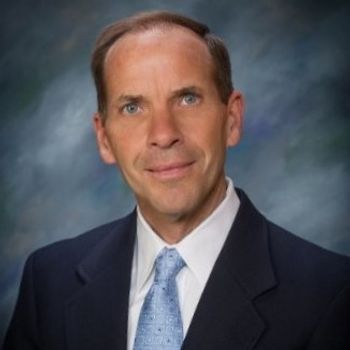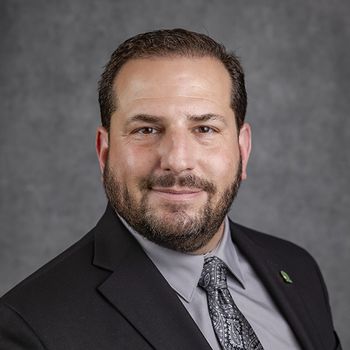
CARES Act compliance for physicians: The provider relief fund, explained
What to know about the provider relief fund and how to avoid costly mistakes in the use of the funding.
As the nation’s health care system focuses on COVID-19 vaccination efforts, physician group practices continue to grapple with a number of financial and operational challenges caused by the COVID-19 pandemic. Chief among these challenges are compliance considerations related to the Provider Relief Fund (PRF), administered by the Department of Health and Human Services (HHS). Last April, HHS began issuing payments under the PRF to health care providers, including group practices, using funding appropriated by Congress as part of the Coronavirus Aid, Relief, and Economic Security (CARES) Act.
The CARES Act provided $100 billion to HHS to be issued to eligible health care providers to reimburse health care related expenses and revenue losses attributable to COVID-19. Congress later provided an additional $78 billion to HHS. Group practices enrolled in Medicare received automatic payments under a General Distribution issued in April 2020, and HHS allowed practices to apply for a second round of payments before a June deadline. HHS continued to issue payments under several additional PRF distributions through 2020.
To accept a PRF payment, HHS required physician practices and other providers to agree to terms and conditions that govern the allowed and prohibited uses of funding. The terms and conditions also require recipients to report information to HHS on use of funding. HHS has indicated that recipients will be subject to future auditing. As with prior government relief efforts, the government will seek to enforce the rules related to these funds through a variety of means and actively pursue those entities and individuals who take advantage of government programs. Below, we outline key compliance considerations, preview potential enforcement activity, and share strategies to minimize compliance risk.
Key Compliance Considerations
The terms and conditions specify that recipients may use PRF payments to reimburse health care related expenses and revenue losses attributable to COVID-19. The terms and conditions do not define these terms, but HHS has issued
HHS offers recipients three options for how to calculate revenue losses, including a comparison between 2020 patient care revenues and 2019 patient care revenues, 2020 patient care revenues and 2020 budgeted patient care revenues, and “any reasonable method of estimating revenue.” However, HHS requires different supporting documentation depending on the method chosen, and some methods will increase the likelihood of scrutiny by the agency.
The terms and conditions also include prohibitions on how payments may be used, including a ban on duplication of benefits that prohibits recipients from using PRF payments to reimburse expenses or revenue losses that have been reimbursed from other sources or are obligated to be reimbursed through another source. The terms and conditions also prohibit recipients from engaging in “balance billing,” preventing providers from collecting cost-sharing from patients treated out-of-network in an amount greater than what the patient would have paid for in-network care. The ban applies with respect to “all care for a presumptive or actual case of COVID-19.”
HHS Reporting Requirements and Audits
HHS will require PRF recipients that receive at least $10,000 in payments to submit reports to the agency on how funding has been used. HHS is expected to implement a website portal through which providers will submit reports but, at the moment, the agency has only unveiled a
HHS previously indicated that providers would submit two reports. In the first report, providers would submit expenses and revenue losses for which PRF payments were used during calendar year 2020. In the second report, providers would submit expenses and revenue losses for which PRF payments were used in the first six months of calendar year 2021. Current guidance indicates that PRF recipients must use payments by June 30, 2021 and return unused payments to HHS. However, stakeholders are questioning whether HHS will extend this deadline, given that the public health emergency is likely to still be in effect and providers are likely to continue incurring expenses and losses due to COVID-19.
HHS has indicated that the agency reserves the right to audit PRF recipients, which could involve audits conducted by the HHS Office of the Inspector General (OIG). It is expected that auditors could evaluate the accuracy of information submitted to HHS, both as part of applications for funding as well as through the reports on uses of funding. Auditors could also evaluate compliance with provisions in the terms and conditions, such as the prohibition on using PRF payments to reimburse expenses or losses that have been or are obligated to be reimbursed through other sources or the ban on balance billing.
HHS has also specified that PRF recipients, including those that are non-profit as well as those that are commercial (for-profit) organizations, are subject to Single Audit requirements under the Uniform Guidance (42 C.F.R. § 75 Subpart F). Entities that receive $750,000 or more in annual federal awards must undergo a Single Audit that evaluates compliance with the PRF rules. For-profit organizations may meet this requirement either through an audit conducted in accordance with Government Auditing Standards or an audit in accordance with the Single Audit standards outlined in the Uniform Guidance.
Potential Enforcement Actions
To enforce rules related to the use of PRF funding, government agencies can employ a variety of tools. Most enforcement activity will begin because of one of several reasons: First, by reviewing information provided during reporting by a PRF recipient. In this instance, HHS will review the material submitted by a provider and either follow up for additional information or refer the matter to the Department of Justice (DOJ). Second, through reports by a whistleblower or informant through either formal or information action. Financial incentives coupled with the stress and potential frustration of individuals with access to information create a recipe for individuals seeking to report allegations of potential misconduct. Third, a review as a secondary investigation to another investigation. This may be fairly routine, as during an already open investigation relating to potential misconduct, DOJ or HHS may inquire into or review the use of PRF funds as a matter of course. Fourth, DOJ and HHS often open investigations through other statistical or targeted enforcement priorities. As DOJ and HHS create task forces or enforcement initiatives, they may employ a statistical analysis of data and identify outliers among particular classes of providers. This is becoming a more and more common (and, in most cases, preventable) reason to become the focus of government attention.
To conduct these actions, the government may employ a variety of tolls. These may include informal correspondence and inquires; interviews; Office of Inspector General subpoenas; Civil Investigative Demands; HIPAA Subpoenas, Grand Jury Subpoenas; and even search warrants. Regardless of the types of tools used, the information provided can all be used by the government to take adverse administrative action like recoupment or debarment; impose civil liability through statutes like the False Claims Act; or pursue criminal charges against those who engage in criminal conduct.
Compliance Strategies
As physician practices prepare for the unveiling of the HHS reporting system and the possibility of future audits and enforcement activity, providers should consider strategies to minimize the risk of compliance violations.
Providers may wish to implement internal accounting systems that track expenses and revenue losses attributable to COVID-19 that could potentially be reimbursed using PRF payments. Providers should consider other sources of funding available to them and determine which expenses/losses will be reimbursed through what funding source. It will be important for providers to maintain documentation to demonstrate that they did not use PRF payments to reimburse expenses or losses reimbursed or obligated to be reimbursed by another source.
As providers evaluate whether to use PRF payments to cover expenses that have been incurred related to COVID-19, providers should also make sure they have documentation in place to demonstrate that the expenses are allowable, consistent with HHS guidance. Providers should also ensure they have policies and procedures in place demonstrating how they meet the requirements under the PRF terms and conditions, including the ban on balance billing.
Lastly, providers should proceed with caution with how they discuss or even talk about using the PRF funds. Improper suggestions of misuse, even in jest, can motivate whistleblowers and the government to aggressively pursue investigations and prolong resolution. A serious and understanding approach to using the funds, appreciating the focus the government will continue to employ over its use, is the best path for success.
Thomas H. Barnard, a shareholder at Baker Donelson, is a former Assistant United States Attorney, military prosecutor and military defense counsel with more than 20 years of government experience. He is the former vice chair of the firm’s Government Enforcement and Investigations Group. Tom regularly serves as the representative for individuals and corporations while interacting with the government in a wide variety of scenarios.
Jeff Davis, of counsel/senior advisor at Baker Donelson advises health care providers and other clients on legal and policy matters, including assistance with the complex issues surrounding the 340B drug pricing program as well as Medicare and Medicaid billing and reimbursement issues. He provides clients with strategic advice related to public policy issues before the U.S. Congress and the administration, including drug pricing and non-profit hospital issues.
Newsletter
Stay informed and empowered with Medical Economics enewsletter, delivering expert insights, financial strategies, practice management tips and technology trends — tailored for today’s physicians.















